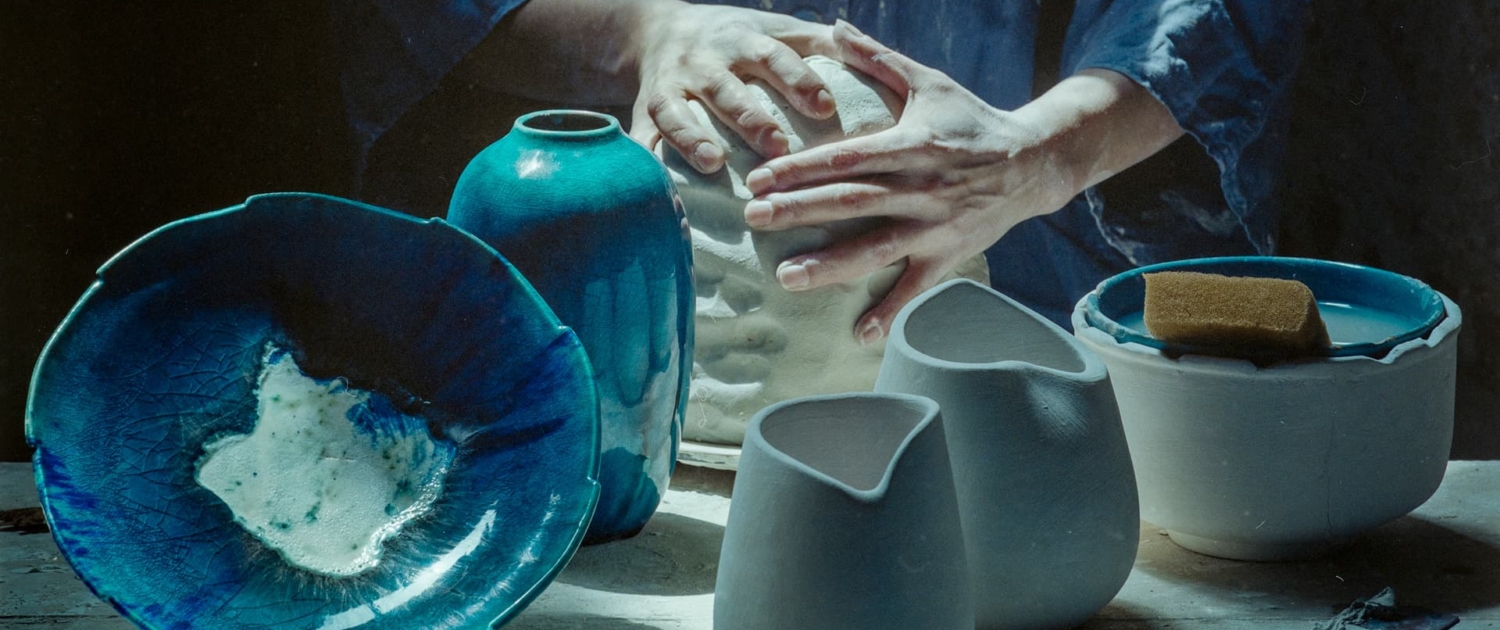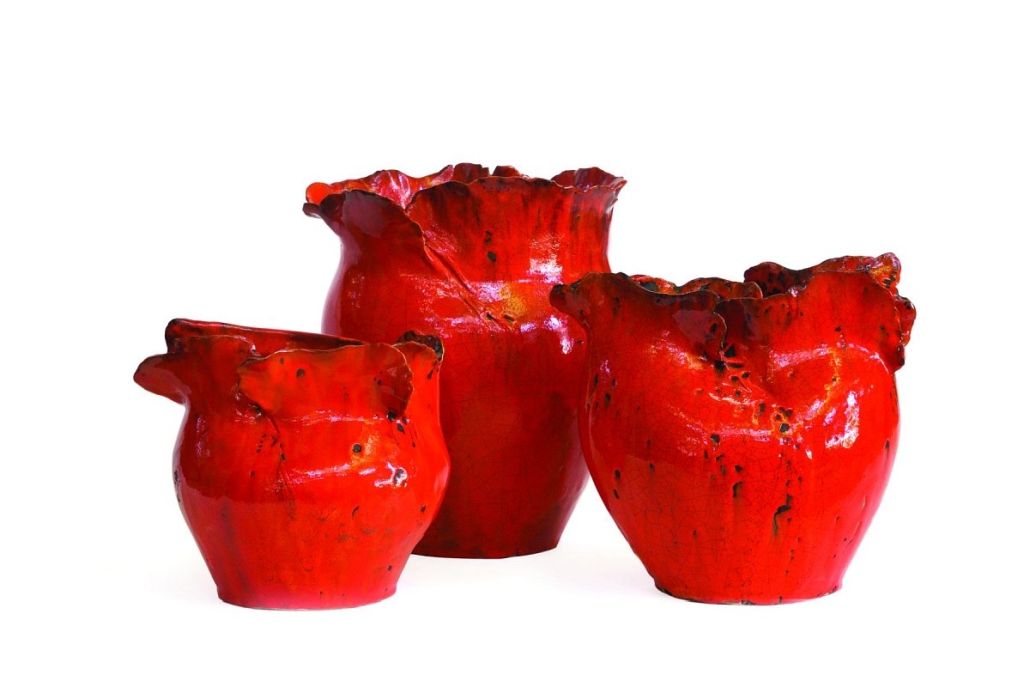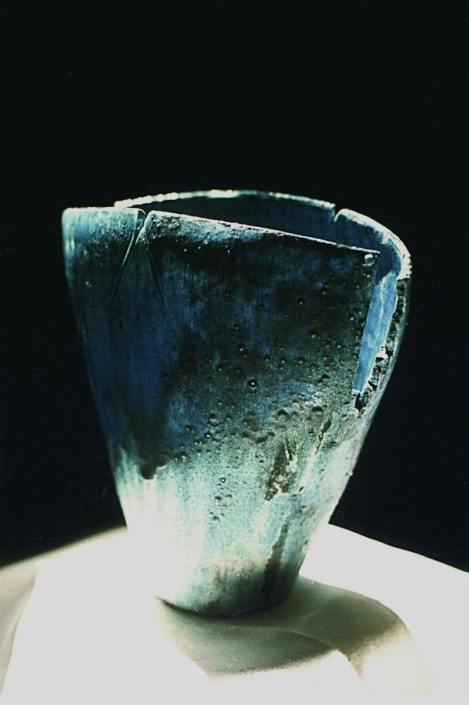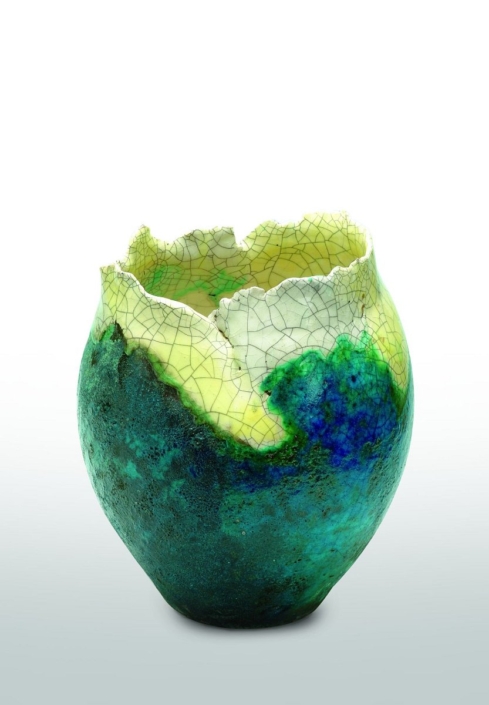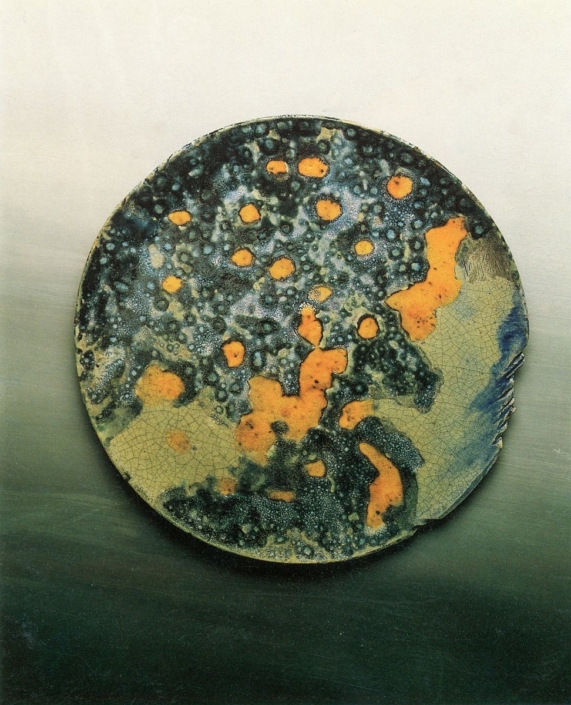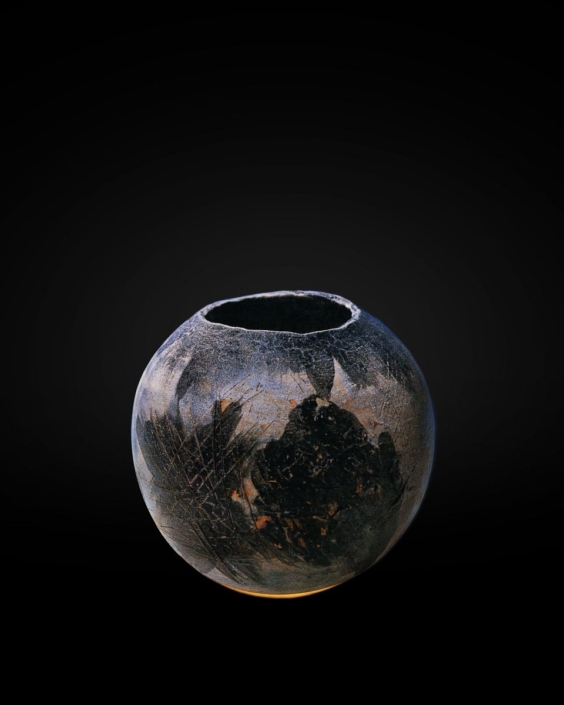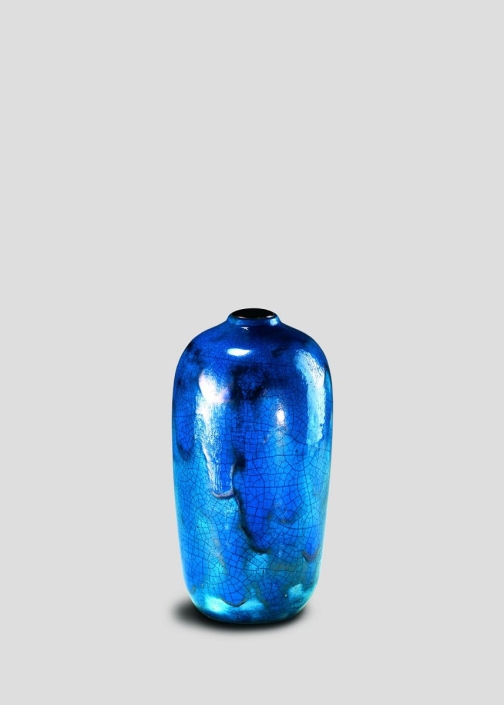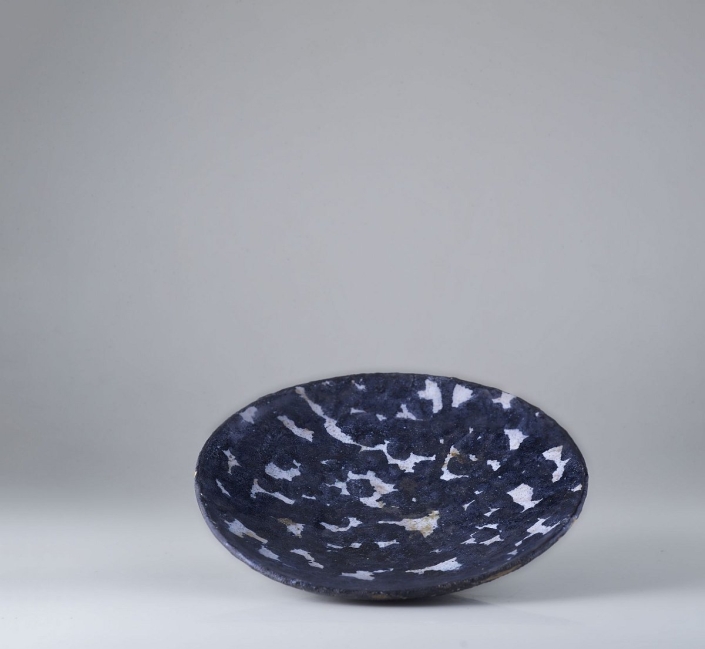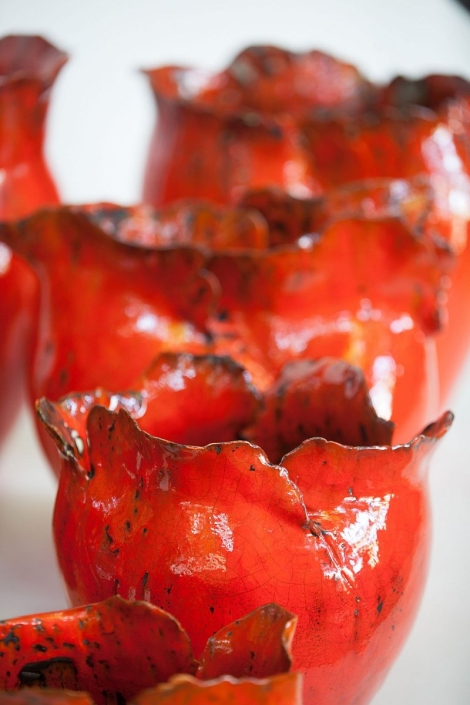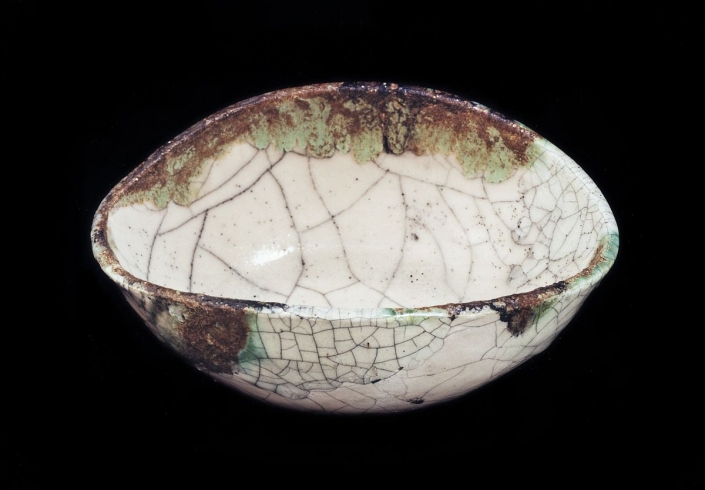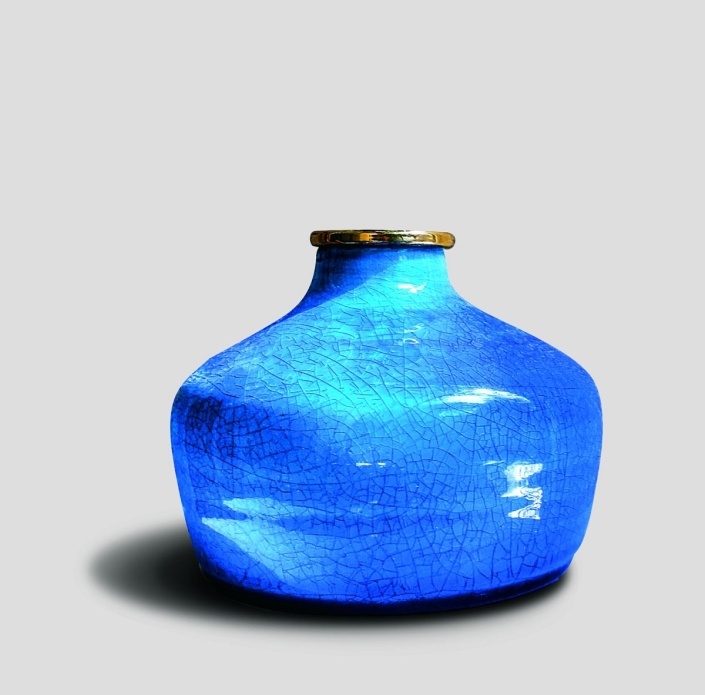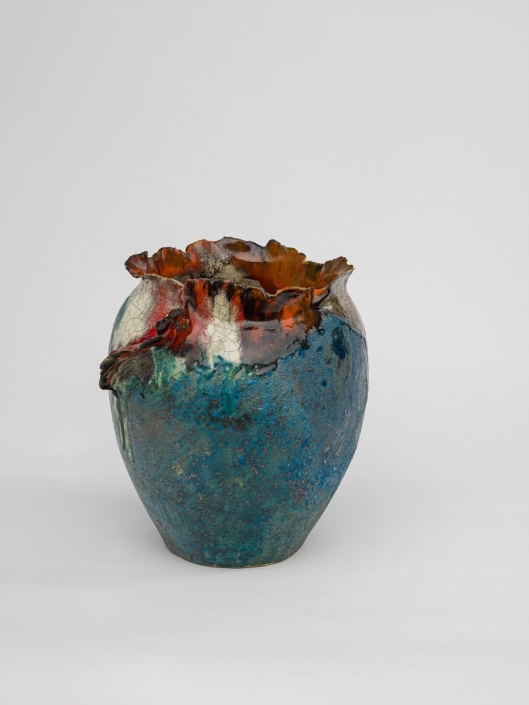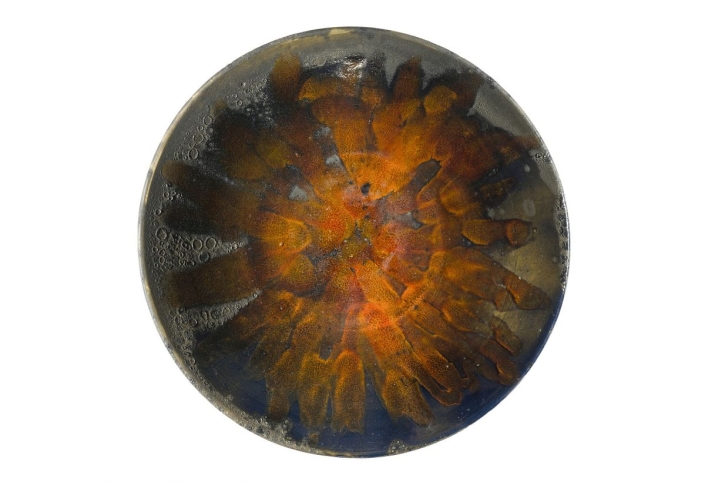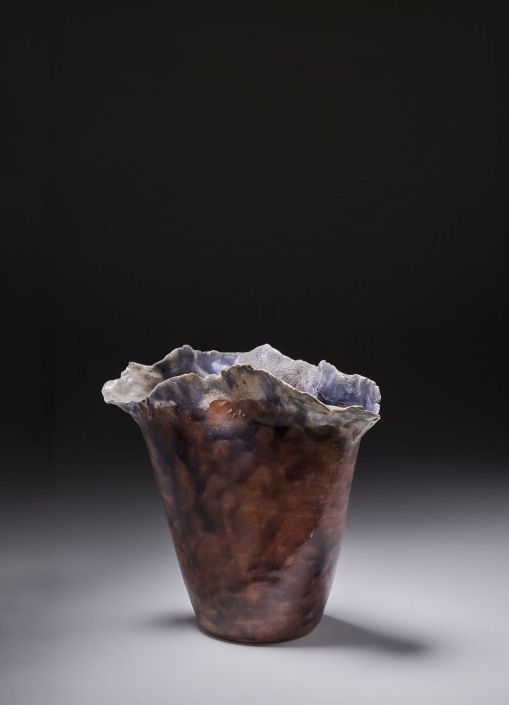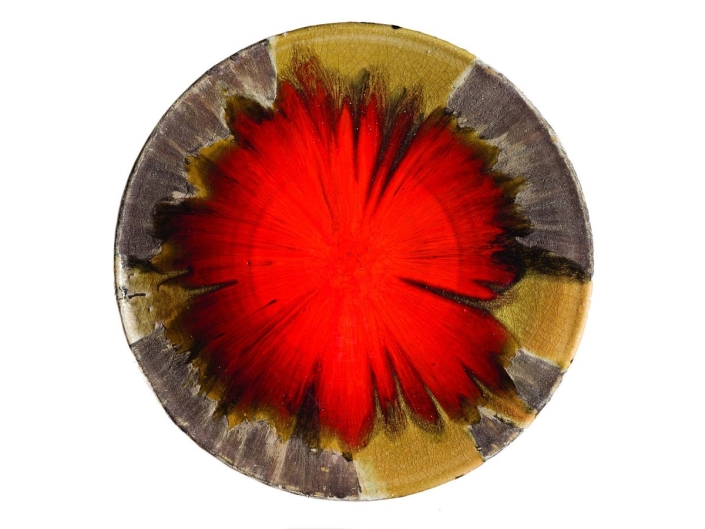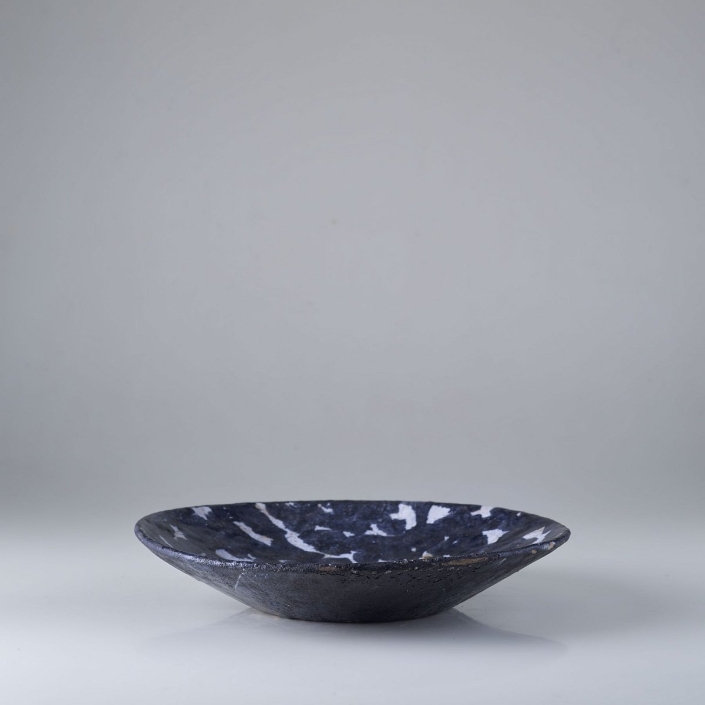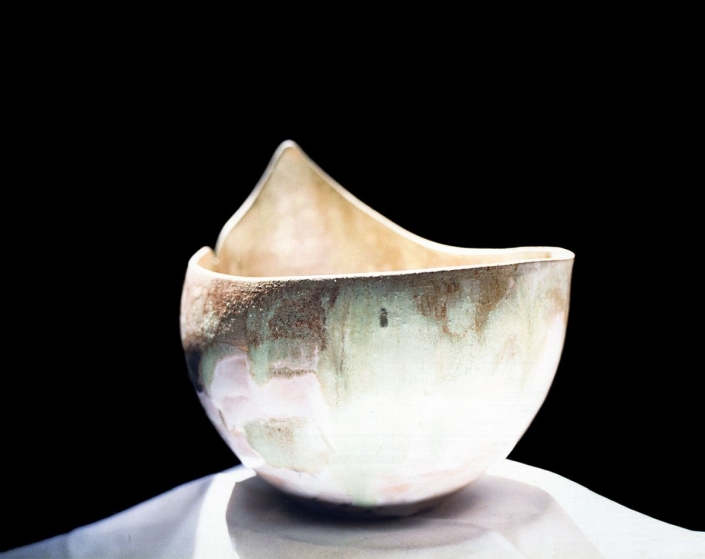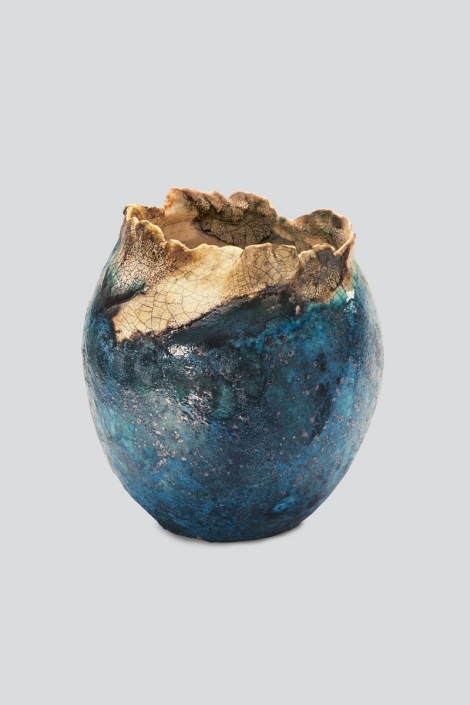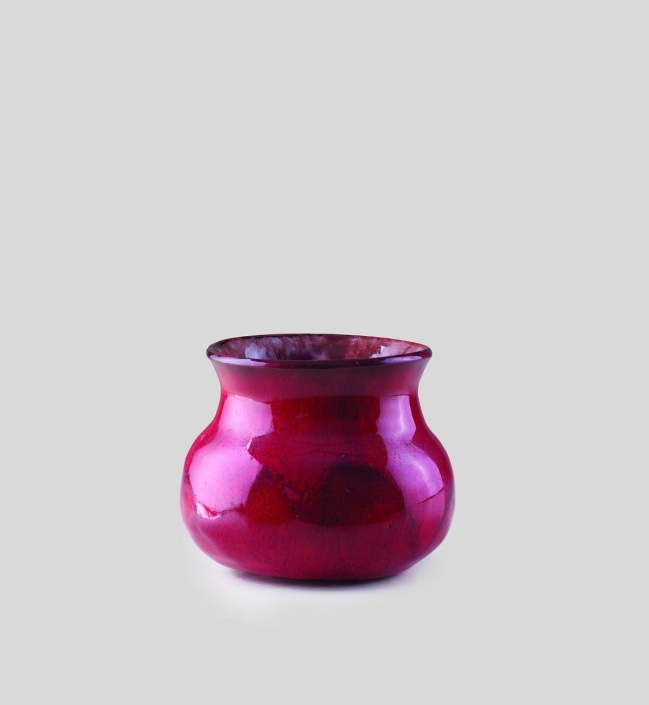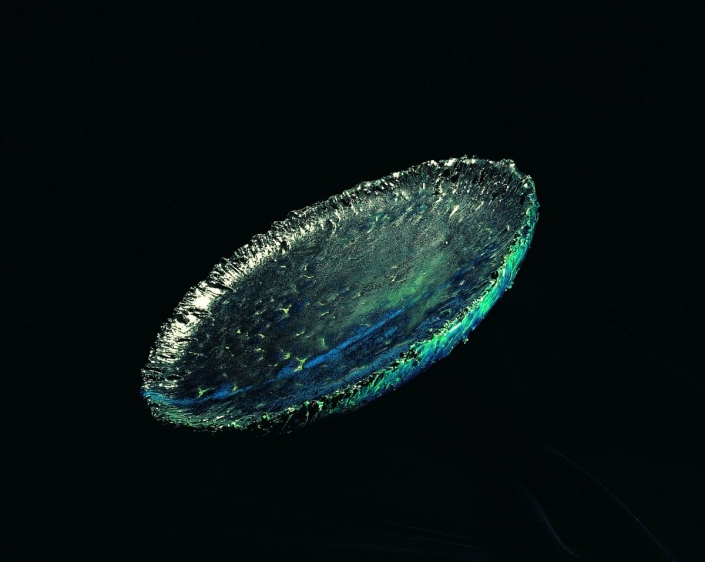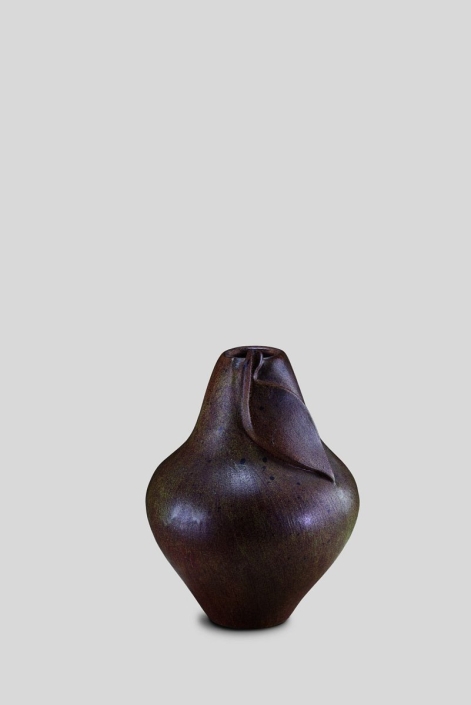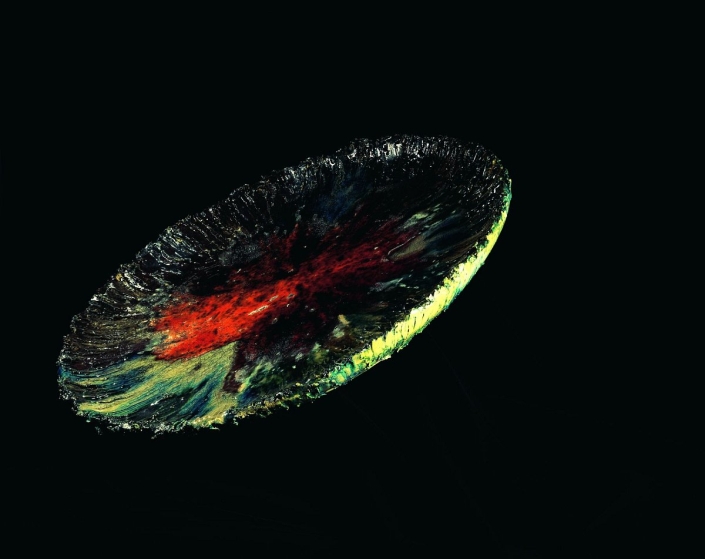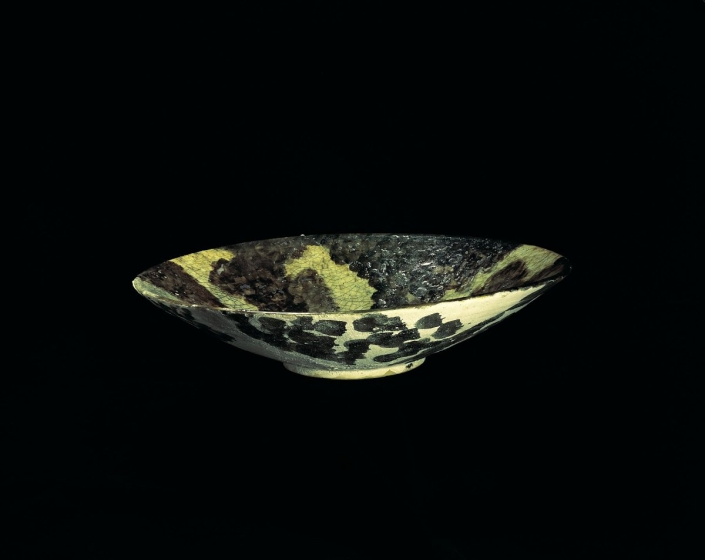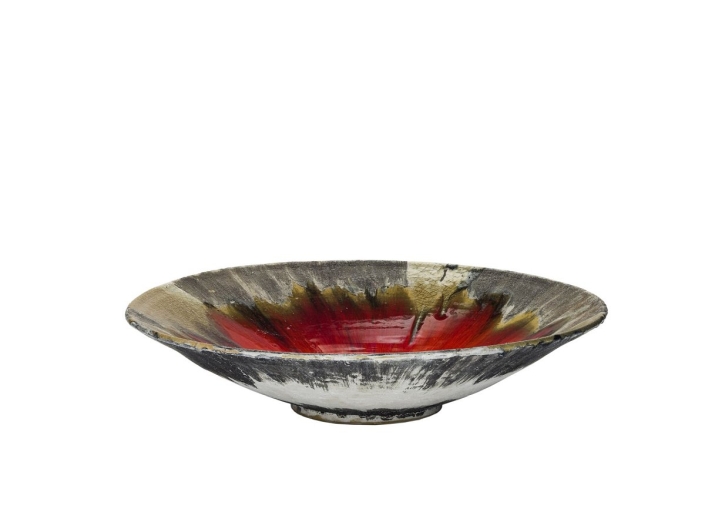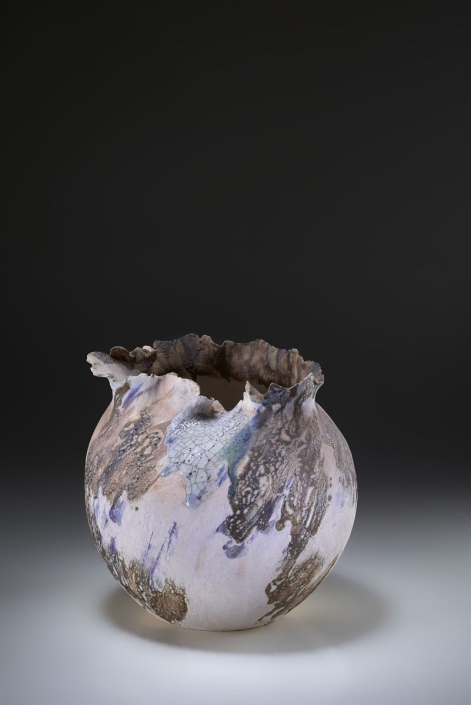Is pottery an art form or an industry? By industry I do not necessarily mean machine- or factory-driven production, but the capacity to produce and re-produce an object, a commodity, by hand or with a machine, in large numbers, to be sold in a market. The producer must possess technical knowledge but she need not possess artistic sense. The hands of an artisan move with dexterity, her mind mindful of her hands, for the shape of the lump of clay on the potter’s wheel to reproduce the vase according to a particular design. She must be careful when applying the glaze not to miss a spot, to keep the kiln temperature steady, to eye the clock, and to let the pot cool down gradually when removed from heat. A potter coming from such traditions as Lalehjin or Rey has known these techniques for centuries. Even though her best can be considered a work of art, a potter following time-worn techniques will never call herself an artist. She is an artisan and nothing more. She is just following a long-standing lore, and if one day her artifacts are not sold because people prefer bright red plastic bowls, she will say goodbye to her wheel and do something else.
The show before you is an exhibition of works of pottery but it is not a traditional one. Maryam Salour makes pottery to create works of art. Glaze, color, and clay are tools to express her emotions, much like what canvas and color are to a painter. I have witnessed her work over the years and I am delighted that with every show she is more successful. Having studied in France, she spent time experimenting with techniques she had picked up in the new context of Iran. She traveled to places where pottery had a long-standing presence, getting to know local masters, and familiarizing herself with the material and tools they used. She then set up a studio at her house, built a kiln, and worked by herself. It took some time to streamline the process, and then she gained so much confidence in her métier that she took her works to galleries. In her early exhibits, Maryam Salour did not depart from classic forms, and stuck to familiar circular, spherical, cylindrical, and pyramidal shapes. All colors were evenly applied and pleasant to behold, much like what a painter does with canvas and oil. Now, several exhibits later, we see that she has developed so much confidence in her skills that she can break free of forms, mix colors, and bring technique to the service of her artistic practice. This is how it is supposed to be done. Maryam Salour has reached maturity and gained freedom in her expression and from here on she will do as she wills with her tools. She is an artist who has found her language.
Karim Emami
Author, art critic and translator
Tadjrish 1993
Coquelicots de la Vallée de Lar | Céramique | Lar Valley Poppies | Ceramic | 2014

